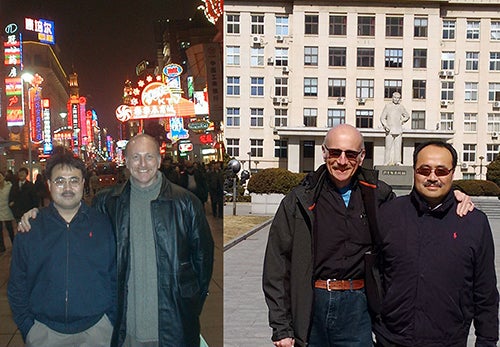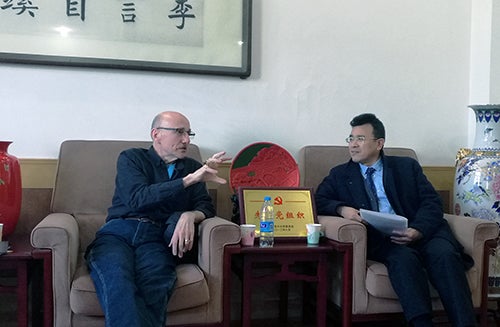
ZC and me (February 2002 and February 2017)
“Everything that you think you know about China is wrong.”
In late February 2001, I wrote this statement as the opening line of a report for my colleagues when I returned from my first trip to Beijing.
Sixteen years later, the statement still holds!
That’s because China is a moving target. And therein lie both the intrigue and the charm of the place.
In 2001, I was searching for a way to say that many of my own stereotypes about China needed to be thrown into the heap after that first trip.
The caricature of science in China is what we disparagingly call doing “turn the crank” experiments: no invention, perhaps not even a strong sense for the fundamental theory behind the buttons being pushed on the equipment, and the generation of experimental data without a strong critical sense to sort out the wheat from the chaff. In fact, this was neither universal nor the norm in 2001, and by any number of US-generated reports, we are on a fast-track trajectory towards second place.
Placed in the context of history, the progress made by Chinese science – which, effectively, did not exist from 1949-1980, a time during which Western science grew enormously – was spectacular. In twenty years’ time, 1980-2000, much of science had rebooted to levels that were in places only about a decade behind us, and in other places right up to date. In the past fifteen years, this gap has narrowed.
The rate of progress is what people miss when they have not been there, because perhaps you are calibrated to your own neighborhood. I’ll pick my most favorite concrete example: mass transportation. In 2001, the era of the massive movement of people on bicycles through the middle of Beijing was just about over. By 2003, you just did not see this any more. In 2001, there were about 25 miles of subway in Beijing – the circular Line 2, outlining the place where the old city wall stood, and the linear Line 1, cutting line 2 about 2/3 of the way down, just south of Tiananmen Square, and extended just a few stops on each side of Line 2. You paid 2 RMB (then about 25 cents) at a window for a paper ticket, which you walked over to a person a few feet away to tear and let you pass. Other cities were deemed “too small” to support subways. Fifteen years later, there are 300 miles of subway and light rail around Beijing, and the fast-train connections between cities that cut down 12-16 hour travel to 3-4 hours.
Nothing is perfect, a lot depends on your source of news and your perspective, which the 2016 US elections have certainly proved.
The rate of change in China, given that most modernization did not start until 1977, is what you need to look at. Stock values… the temperature… everything is defined by small ups and downs. But back up for a decade or two of perspective and you can see where the real trends are located.
And when you combine rate with scale, you get momentum. It is not just a few people moving forward. As one of our Beijing hosts said in 2001 when I was wrapping my head around what 1.3 billion people meant: “Remember, this is China, if you are one in million…” he paused… “there are 1300 of you.”

With Professor Wang, Dean of Chemistry, Nankai University
February 24, 2017

